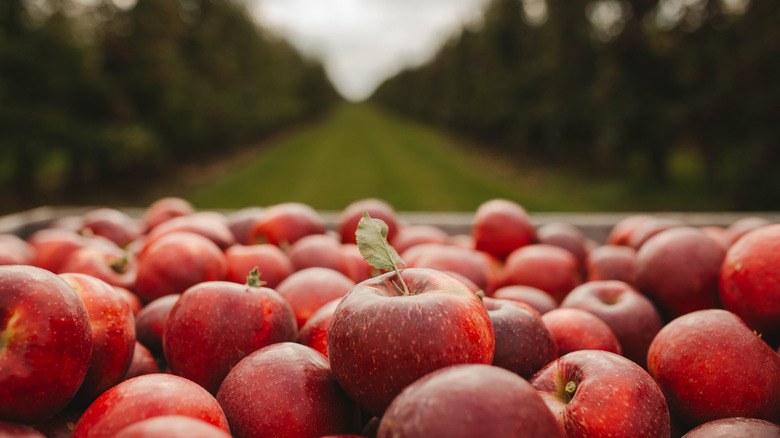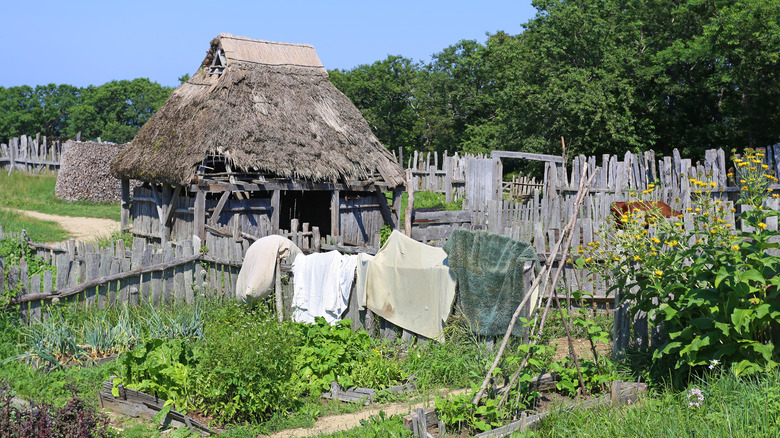How The Pilgrims Made Apples A Part Of American Cuisine
Americans love their apples. Per Statista, we ate a little more than 16 pounds of apples per person in 2021. Apple pies, apple tarts and cobblers, apples sliced up for a snack, or made into a cider that can be enjoyed warm or cold, there are plenty of ways to enjoy one of the many red, green, or yellow types of apples that we love to gobble up. According to USApple, there are over 100 different types of apples grown in the United States, including those of the golden delicious variety and the sweet Honeycrisp. But did you know that this fruit is not indigenous to America, and in fact, we have the pilgrims to thank for bringing this fruit to our land?
Per Reader's Digest, we can even thank the pilgrims for the modern apple orchards that can be found in all 50 states. According to the Brooklyn Botanic Garden, all apples can be traced to the mountains of Kazakhstan before they made their way to America. So, when did the pilgrims bring apples to the U.S.?
Apples were brought to Massachusetts
The North Carolina Historic Sites reveals that the first apple seeds were brought to America by pilgrims in 1620 who lived in what today we call Massachusetts. Apple trees soon found a home in this region and quickly spread across the Northeast to Maryland where at one point 90% of this state's farms were growing apples. This fruit quickly became a staple, and trees could be found in Virginia and North Carolina. Apples were here to stay.
Later, John Chapman, who is better known as Johnny Appleseed and who also hailed from Massachusetts, would take up the torch of spreading the love of apples. But per Smithsonian Magazine, those apples were not primarily for eating, but rather for making cider which was an important beverage to settlers. In a land where the safety of the water might be questionable, cider was the perfect alternative. The magazine goes on to share that Chapman was very much a businessman and was said to travel ahead of pioneering settlers, and plant orchards before they arrived. He would then sell the orchards and move on to the next frontier. Today, America is one of the largest producers of these beautiful fruits (via Statista).

